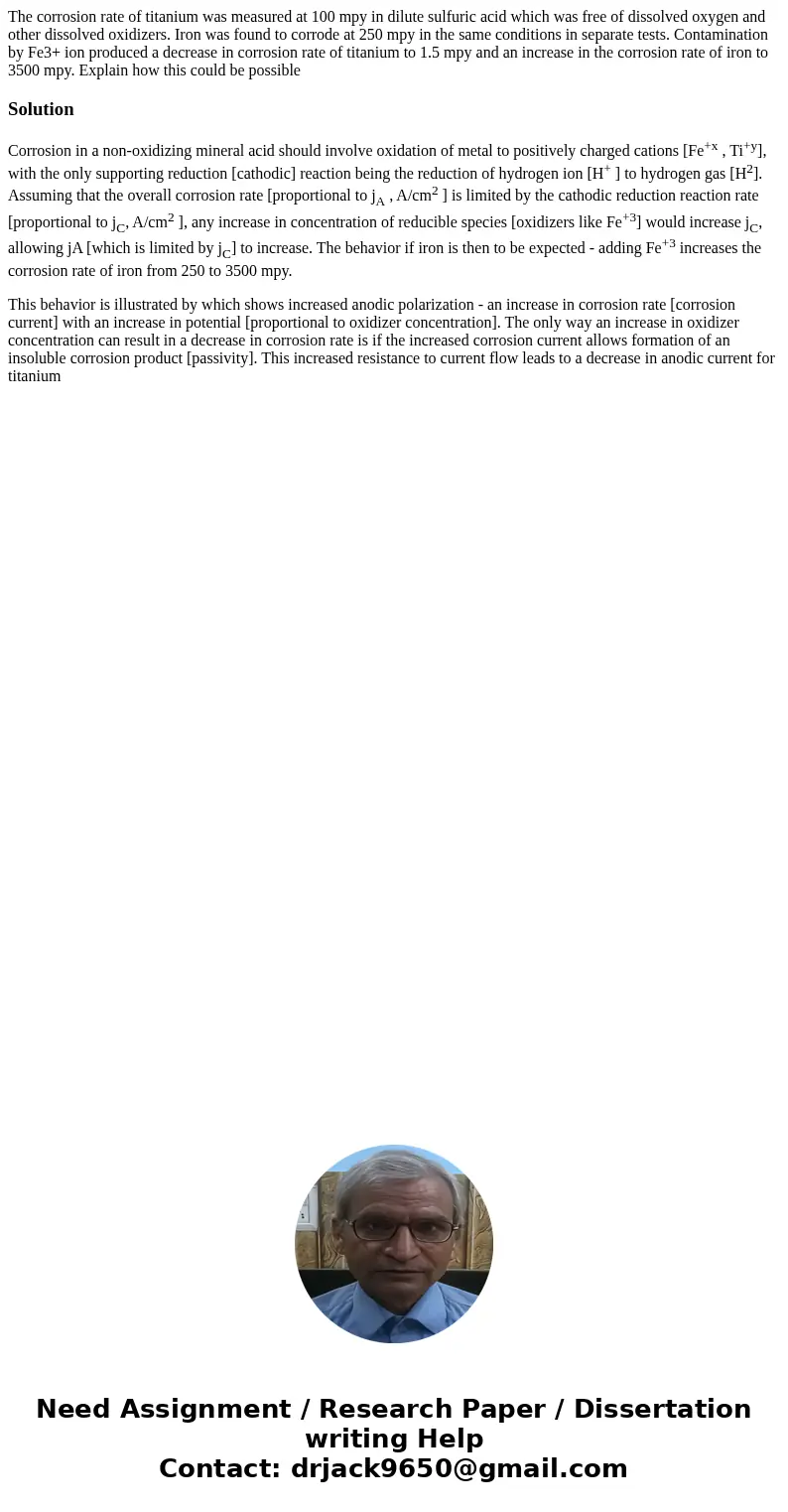The corrosion rate of titanium was measured at 100 mpy in di
The corrosion rate of titanium was measured at 100 mpy in dilute sulfuric acid which was free of dissolved oxygen and other dissolved oxidizers. Iron was found to corrode at 250 mpy in the same conditions in separate tests. Contamination by Fe3+ ion produced a decrease in corrosion rate of titanium to 1.5 mpy and an increase in the corrosion rate of iron to 3500 mpy. Explain how this could be possible
Solution
Corrosion in a non-oxidizing mineral acid should involve oxidation of metal to positively charged cations [Fe+x , Ti+y], with the only supporting reduction [cathodic] reaction being the reduction of hydrogen ion [H+ ] to hydrogen gas [H2]. Assuming that the overall corrosion rate [proportional to jA , A/cm2 ] is limited by the cathodic reduction reaction rate [proportional to jC, A/cm2 ], any increase in concentration of reducible species [oxidizers like Fe+3] would increase jC, allowing jA [which is limited by jC] to increase. The behavior if iron is then to be expected - adding Fe+3 increases the corrosion rate of iron from 250 to 3500 mpy.
This behavior is illustrated by which shows increased anodic polarization - an increase in corrosion rate [corrosion current] with an increase in potential [proportional to oxidizer concentration]. The only way an increase in oxidizer concentration can result in a decrease in corrosion rate is if the increased corrosion current allows formation of an insoluble corrosion product [passivity]. This increased resistance to current flow leads to a decrease in anodic current for titanium

 Homework Sourse
Homework Sourse